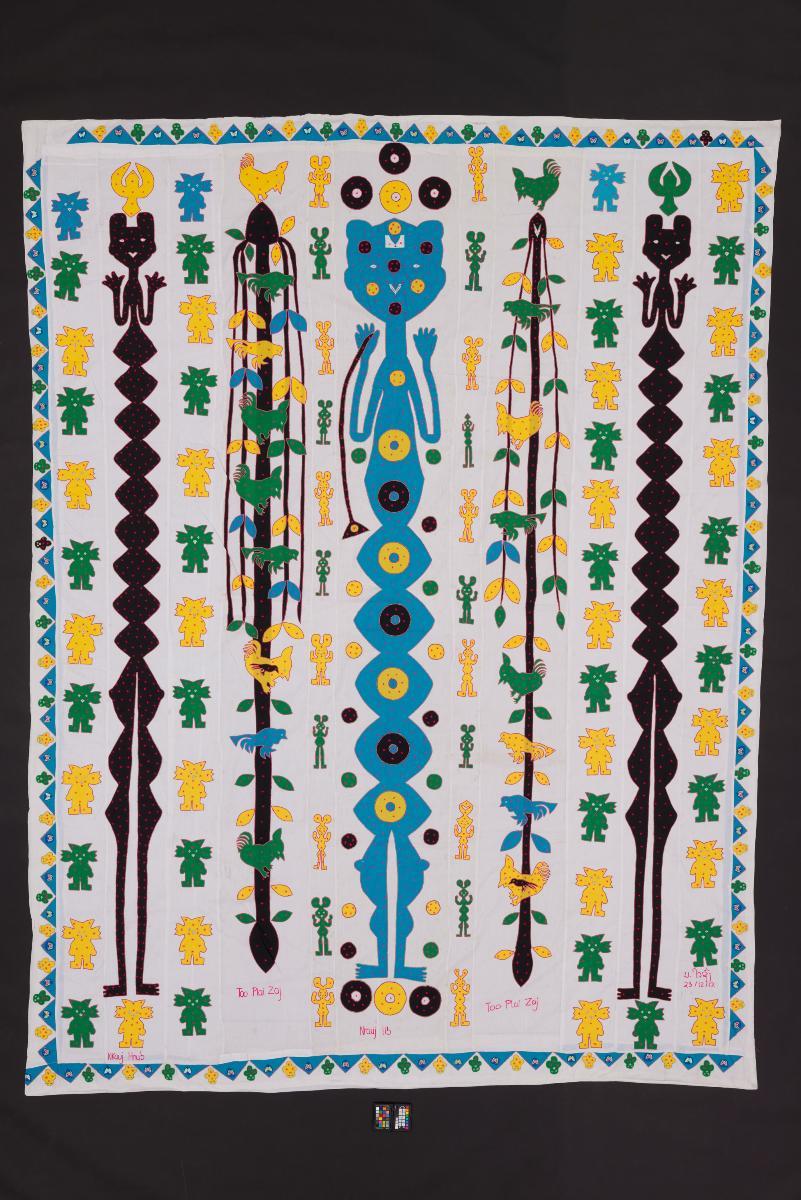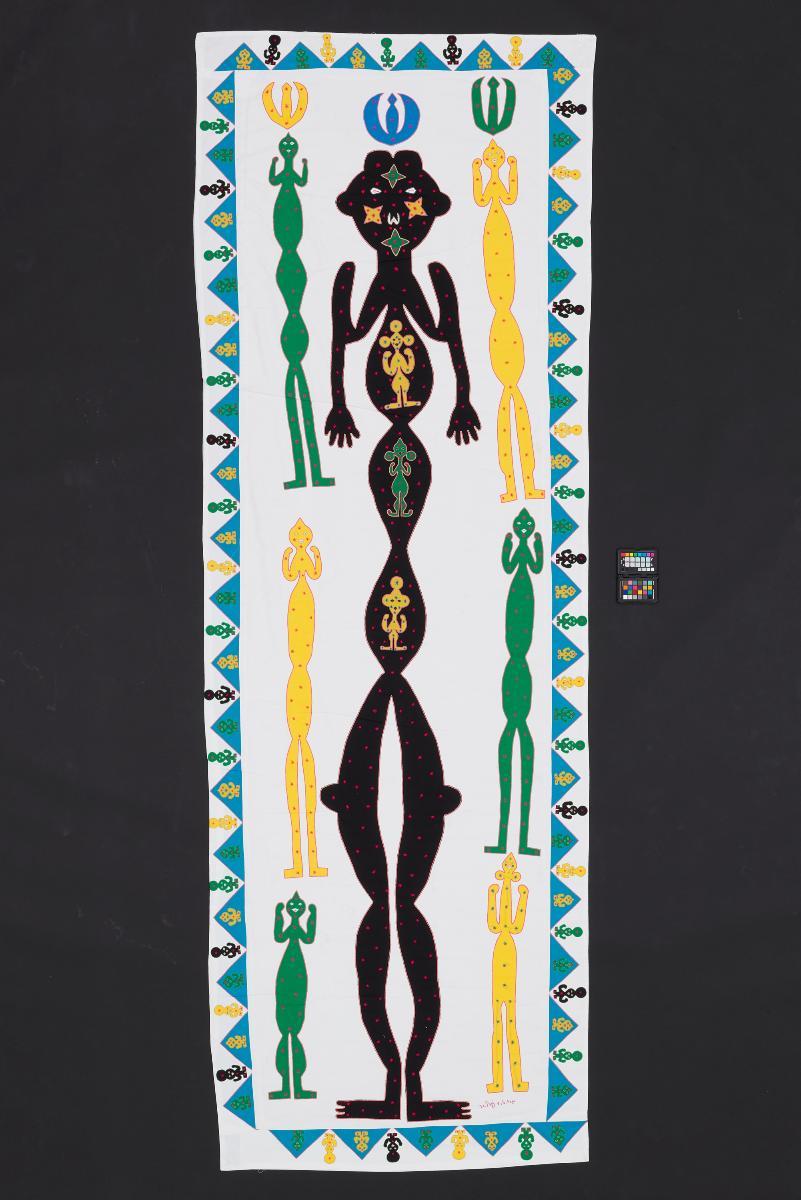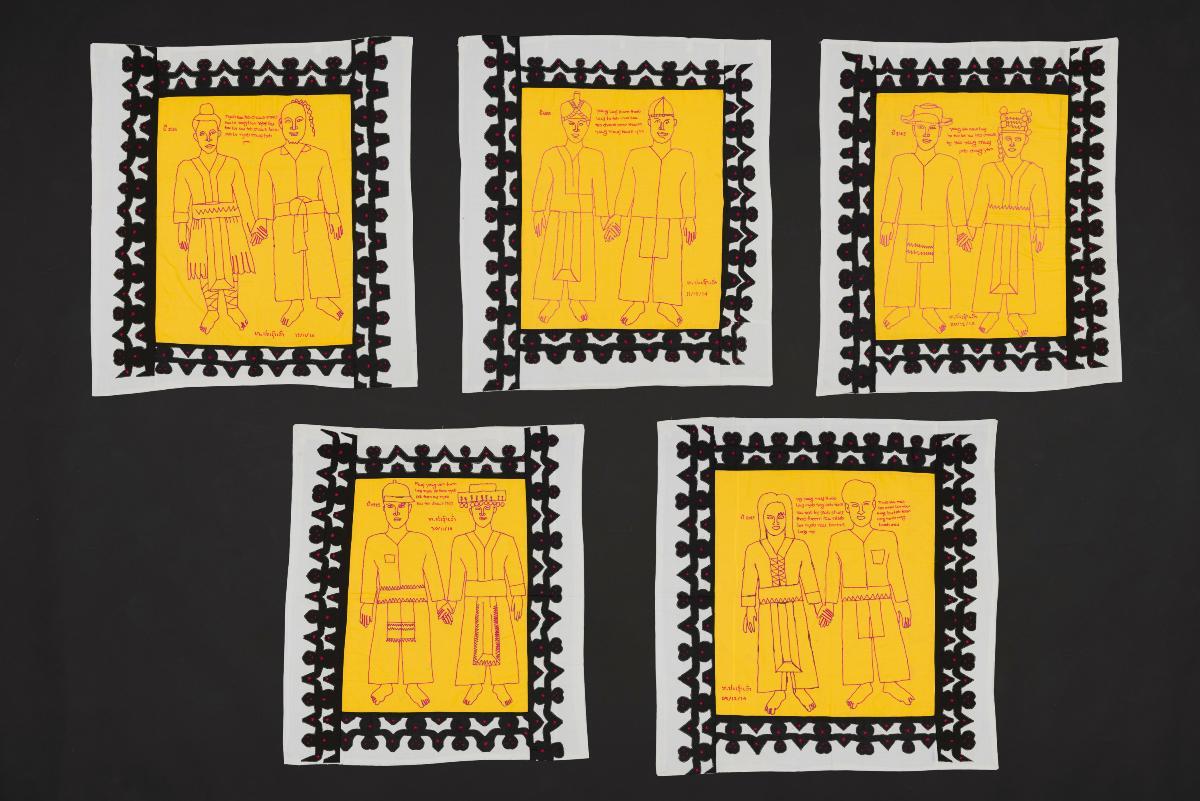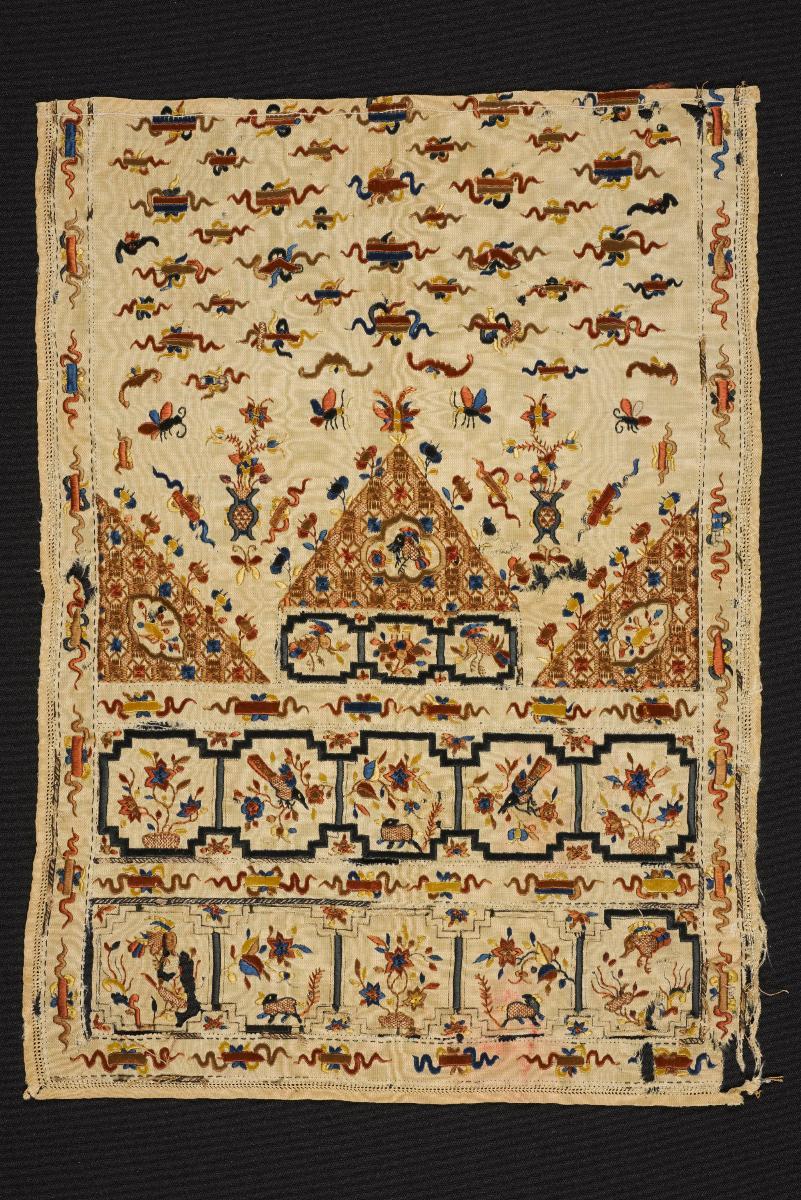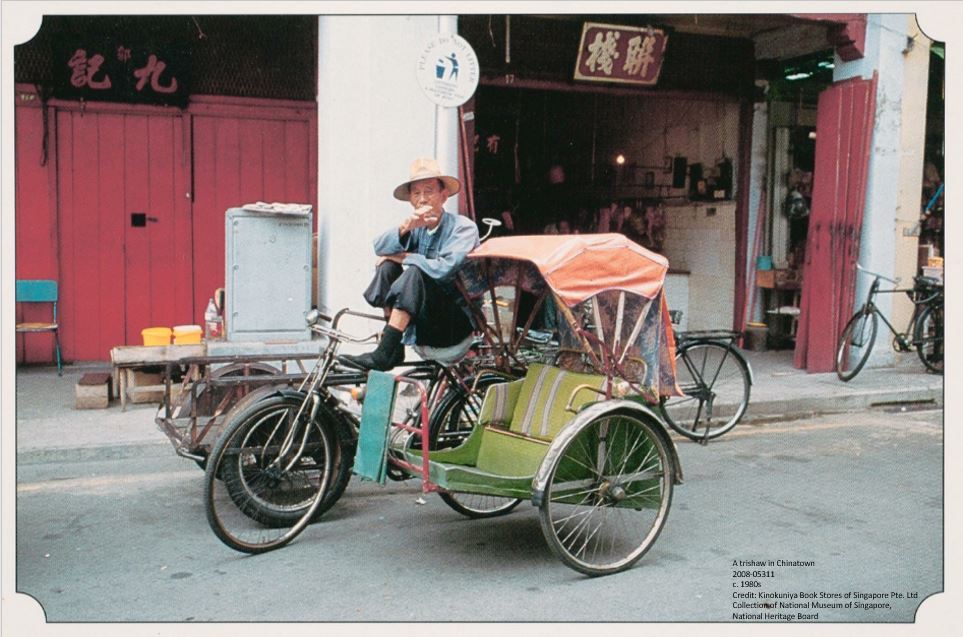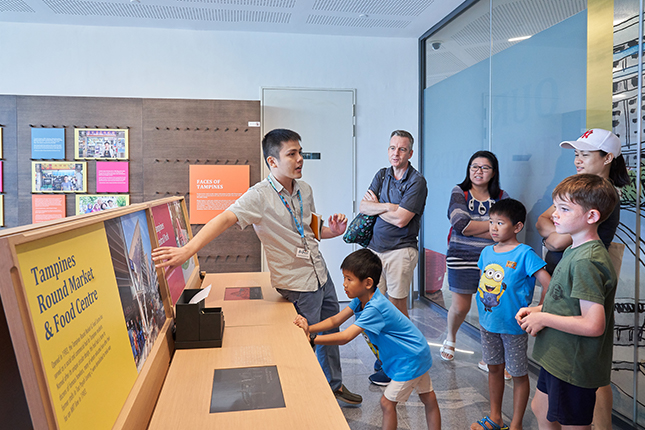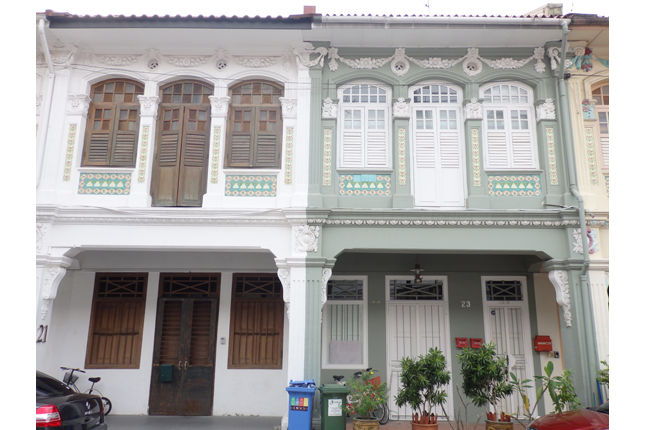Phasao Lao and Tcheu Siong are a Laotian husband and wife couple of Hmong ethnicity, who produce textile artworks that speak about the universal concepts of genealogy, movement and migration, and symbolism and representation. For the Singapore Biennale 2016, draped down one of the highest continuous walls in SAM are three tapestries of brilliant colour and design: Tree Spirit, Spirit of Sky and Earth 3 and Spirit of Sky and Earth 4 by Tcheu Siong. They bring a vivid array of curious and intriguing depictions into the tall gallery space. Hanging on the opposite wall, Phasao Lao’s History – a series of five fabric appliqué panels – traces the ancestral journey of the Hmong from Mongolia through the highlands of Lao to Luang Prabang, where his clan now resides. The couple’s partnership extends beyond that of marital ‘vows’. Though each of them has their own distinctive aesthetic and is an individual artist, both play a pivotal role in the other’s practice. Siong assists her husband by performing practical tasks in sewing and composition and Lao, as the village shaman, performs the more divinatory role of interpreter of her dreams. His interpretation of the creatures and abstract characters ‘witnessed’ in Siong’s dreams are then embodied in her large-scale textile art. Hmong textile and embroidery production is a traditional practice that is still used today as a marker of clan identity and cultural value, and features on clothing and accessories, in needlework traditions and ‘story clothes’ (pictorial embroidery). However, the works by Lao and Siong blend Hmong customs and culture through the use of textile motifs with figures and compositions that are uniquely their own. In her three works, Siong utilises a variety of design motifs that are typical of Hmong embroidery and story clothes: for example, the triangles that border her panels symbolise mountains, while the cluster of five circles with a dot in each symbolises a peacock ocellus. Particular to Siong’s repertoire of textile artworks are the lanky creatures that feature prominently on each panel. In the context of the animistic beliefs of the Hmong people, they represent ‘shadows’, ‘spirits’ or ‘souls’, which Lao as shaman distinguishes and names. To describe these panels – with their whimsical colours and seemingly childlike simplicity – as art brut, folk or naïve art would not be incorrect. But critical to their reception is also the recognition that these artworks reflect on the language of ‘self and society’ and the ‘spiritual and physical’ realms as perceived and experienced within the traditions and belief systems of contemporary Laos.




